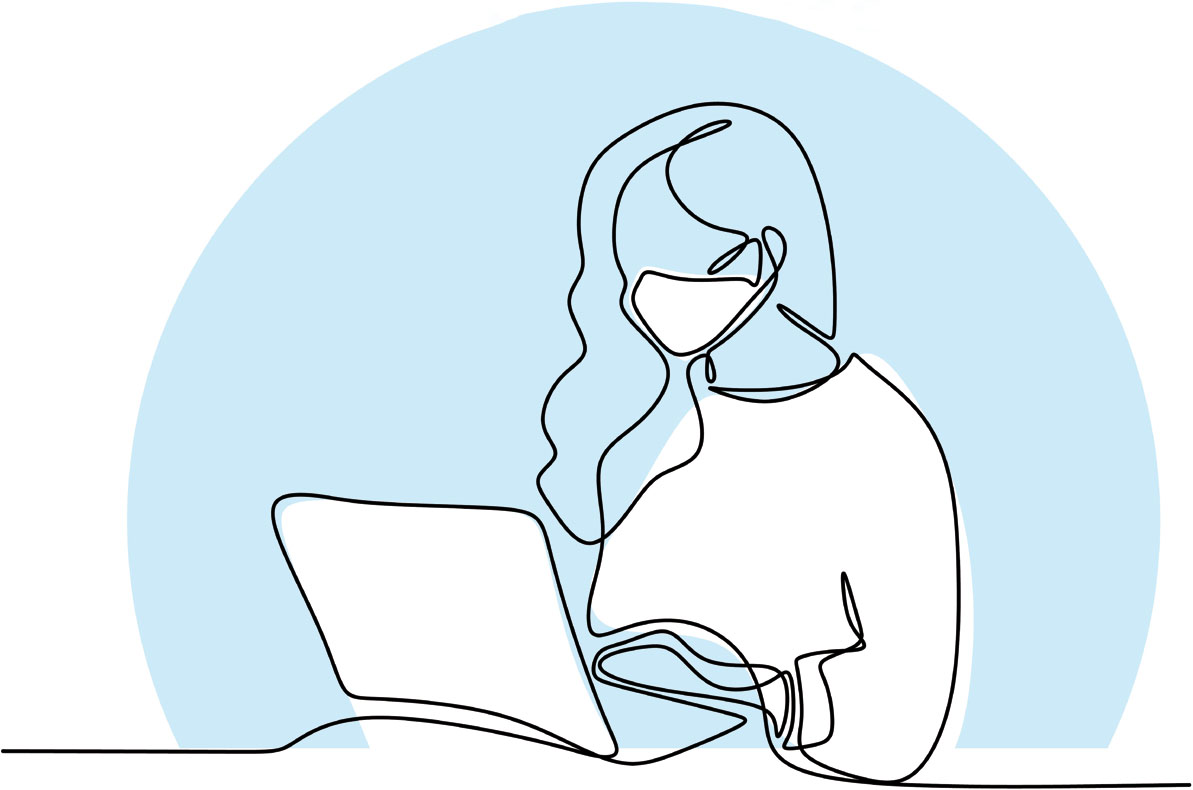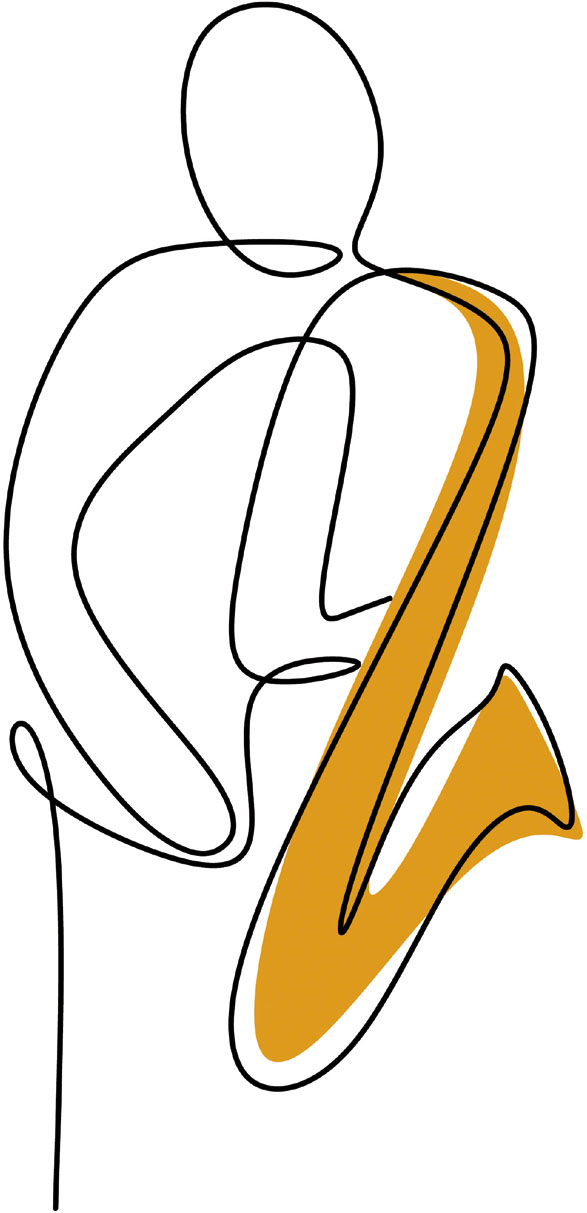
‘One of the worst things has been teaching in maths or geography classrooms. It's been like kryptonite to me as a music teacher – it's absolutely sucked away my superpowers. I feel robbed of my identity.’
Simply having to teach in a non-music room might seem a minor concern among the broader turmoil that the COVID-19 pandemic has caused for music teachers and their students. But as this teacher admits (specific interviewee identities will remain anonymous because of the sensitivities of some of what's discussed), being unable to use the familiar resources of a music room can exert a profound impact on a music teacher's wellbeing.
After a long 15 months of disruption, uncertainty and isolation, it's no wonder that music teachers and their students are facing significant issues in their mental health. According to Ofsted, students’ skills have regressed, and there have been increases in eating disorders and self-harm. Many teachers are wondering whether they're cut out for the profession at all. On the upside, some report a renewed interest in music among students and parents because of what it can offer for wellbeing, but they're also concerned that it should be seen as a serious academic subject rather than simply a therapeutic tool.
Amid all the continuing anxiety and confusion, however, it's also perhaps time to ask how we might begin to address these wellbeing issues.
‘Enforced reflection’
For teachers, uncertainty remains a major concern, as does reacting to constantly changing guidelines – what one teacher describes as ‘an information overload’ – sometimes issued by government with very little notice. It's a situation not helped by teachers’ tendencies to continually strive for excellence, with a flipside that they can be quite self-critical. ‘I've felt like there's a need to justify ourselves to parents and students,’ admits one, and another observes: ‘A lot of music teachers wonder whether they're doing things well enough, especially if they're in a department on their own.’
Keith Ayling of the Music Teachers’ Association (MTA) – which teachers have praised for the extensive resources and support it's offered since March 2020 – points to this very question as a crucial concern. ‘The biggest issue we have now is isolation in one-teacher departments. Some of those teachers are thrust into that role at an early age, stuck there on their own thinking: what do I do?’
Many teachers have taken the lockdowns as an opportunity to rethink the balance between their work and home lives – an opportunity they may not have had without the pandemic. ‘School becomes your life,’ says one teacher. ‘This has probably provided the enforced reflection that I needed. Maybe I'd reached burnout by the time we got to lockdown. Sometimes I wonder if I'd even miss it all if it stopped.’
Some, however, have made bigger decisions about their career direction. ‘We're continuing to support teachers who might be sitting thinking: this isn't what I signed up to do,’ explains Ayling. ‘That's a huge factor in people's mental health. We've already seen a good number of teachers leaving the profession, and I don't think we'll know for a few months how the pandemic has affected the teaching profession as a whole.’
Student response
Among students, music teachers have seen a wide range of responses to the pandemic, which poses challenges in itself. Many have encountered expressions of outright resentment or anger. Barry Carpenter is professor of mental health in education at Oxford Brookes University, and was headteacher in three schools. Back in April 2020, he put together an influential article outlining a ‘recovery curriculum’, identifying psychological issues of anxiety, trauma and bereavement that many students will be experiencing, and proposing ‘levers’ to address them, including restoring relationships, rethinking a school's community, transparency, space and reskilling. He recognises that anger and resentment will be key emotions experienced by students. ‘This has been a tough time, and everyone has had to draw on their inner strength. Adults know how to tap into it, but children don't – and they don't even know where it is. Students have forgotten boundaries, and they're now kicking against them.’
Many feel that media reports of students’ skills regressing significantly may be somewhat exaggerated. More specifically, however, students may feel less willing to engage in or contribute to lessons. ‘They seem to have lost the confidence to do things in front of each other,’ explains one teacher. Another agrees: ‘It's like they've forgotten what it's like to contribute in lessons. Sometimes, I've felt like I'm just talking and talking and talking.’
Another teacher has decided to address this issue directly, speaking to students about their concerns over contributing. In Carpenter's view, this kind of transparency is crucial: ‘We all need to talk about this. No teacher can deny that we've lived through horrendous times, so they should talk to students about it. It's a shared experience.’
Top of many students’ concerns, however, has been exams: uncertainty over how (and whether) they'd be conducted, how they'd be assessed, and whether the results would be forever treated with suspicion. Teachers, too, have admitted their fair share of anxiety over the responsibilities of being the exams’ prime markers and assessors, and because of the sheer amount of additional work required in a short space of time.
What do we do?
With continuing uncertainty and anxiety, the pandemic's tough times are far from over. But perhaps not surprisingly, teachers themselves have come up with some simple but effective practical ideas for dealing with wellbeing in the face of the continuing challenges. ‘I've just slowed down,’ explains one. ‘It's about setting clear boundaries – and knowing that some things really can wait.’
‘Sometimes people try to take on everything,’ says another teacher. ‘But you can't fix everything. It's like wearing a mask during the pandemic – we can't cure the disease on our own, but we can do one thing to help. Do what you can do, then try not to worry about the rest.’

Carpenter recommends focusing on a more fundamental issue when it comes to student wellbeing. ‘Teachers need to know about kids with disorders and what those issues mean, but the question for teachers is: how does that impact on how this child learns? How do we design teaching and learning so that it catches that student at their point of learning need?’
Ayling advises teachers to establish new connections. ‘Call up a school nearby and introduce yourself. It can be very helpful, allowing teachers to compare notes, compare what works and what doesn't. It's probably the biggest thing that will help a teacher.’
Carpenter also suggests other practical ideas that might offer temporary relief to students. ‘I've been working on happiness boxes, which are shoeboxes converted to contain things to make students happy. Kids can keep them with them in classrooms and get things out when they feel they need them. Or, some schools have also been looking at creating sensory sanctuaries, with coloured lights, nice fragrances, soothing music.’
Advice for dealing with mental health issues
- Slow down: be realistic about what you can achieve, set boundaries, and stick to them.
- Do one thing: don't try to solve all of your/your school's issues at once – choose one thing that will help, do it, and recognise the results.
- Be transparent: speak to students about the problems they've faced (and the problems you've faced) and discuss how you plan to tackle them together.
- Connect with others: draw on any support already around you, or make new connections – contact the music department in a nearby school, for example.
- Focus on learning: be aware of students’ mental health issues, but remember that your priority is how a student learns.
- Use music appropriately: don't forget the healing or therapeutic powers of listening, playing or singing, but avoid those becoming the sole reason that you, students or other teachers engage with music.
- Avoid blame: remember this is nobody's fault – not the students’, nor their parents’, nor yours.
- Celebrate achievements: be proud of your resilience and flexibility, and how they have helped students.

Indeed, the irony for music teachers is that the subject they teach can itself offer support and solace during these difficult times – which may potentially bring its own pressures. Some teachers report that, having seen their children turning to music during the pandemic, parents are often more aware and supportive of its powers. ‘This has maybe been an awakening or a realisation that music is important,’ explains one teacher. ‘They might not have realised the importance of music education before.’
Perhaps surprisingly, none of the teachers interviewed remarked on any additional pressure to provide these more therapeutic services in schools. But by the same token, several warned that this renewed interest could potentially be for the wrong reasons: music should be seen as a valid academic subject, not just as a therapeutic tool. ‘Some students might get involved in ensembles because it makes them feel happy,’ remarks one teacher, ‘and that's an absolutely valid reason to come. But I think that has to be the by-product rather than the driving force.’ Another adds: ‘You don't want music to be seen as just a wellbeing subject. We study music because it's something that's fascinating and valid in its own right, and it should be studied on its own merit.’
For Carpenter, however, music's healing powers should be actively harnessed in a time of trauma and recovery. ‘Our mission at the moment has to be about re-engaging, and music provides wonderful opportunities in that sense. Of course there's a therapeutic dimension to music, and it offers some special opportunities. Teachers could give students five minutes of emotional regulation in a lesson simply by playing them a particular piece of music. Or they might even put some clips together for colleagues in other subjects to use in their own lessons, or for themselves. Of course, that's putting more pressure on teachers, but we all have to do what we can to help. Music can make a constructive contribution to the wellbeing of the whole school community, students and staff.’
Carpenter returns again and again to a mantra that he feels should inform all approaches to mental health in the wake of the pandemic: avoid blame. ‘This is nobody's fault. It's not the kids’ fault, it's not the parents’ fault if they didn't have time for homeschooling, and it's definitely not the teachers’ fault.’

And as one teacher observes, despite nothing being quite as it should be, teachers should nonetheless be proud of what they've achieved. ‘We're good at dealing with change and adapting to whatever's in front of us on any particular day. We've got to remember: teachers in general have been remarkably resilient and versatile in how they've dealt with all this.’
Additional resources
-
The Recovery Curriculum (www.evidenceforlearning.net/recoverycurriculum) is an article by Barry Carpenter and his son Matthew, principal of Baxter College, Kidderminster, analysing mental health challenges for students and advising on steps forward.
-
The MTA (www.musicteachers.org) has several articles and podcasts devoted to mental health during the pandemic, as well as continuing CPD courses.
-
Music Mark offers a useful round-up of mental health and wellbeing resources for music teachers and students (www.musicmark.org.uk/resources/supporting-wellbeing-and-mental-health).
-
The ISM has guidance for musicians on looking after their mental health during and after the pandemic (www.ism.org/advice/mental-well-being-in-a-time-of-pandemic).
-
Music Minds Matter (www.musicmindsmatter.org.uk) is a project run by charity Help Musicians to offer support and advice for anyone struggling with mental health issues.
-
YoungMinds (youngminds.org.uk/find-help/looking-after-yourself/coronavirus-and-mental-health) offers help and advice for students with mental health issues.








